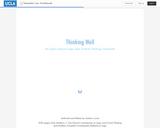
An Open Source Logic and Critical Thinking Textbook
- Subject:
- Arts and Humanities
- Philosophy
- Material Type:
- Textbook
- Author:
- Andrew Lavin
- Date Added:
- 09/13/2018

An Open Source Logic and Critical Thinking Textbook

This new astronomical calendar, compiled by textbook lead author, Andrew Fraknoi lists, month by month, 158 astronomical anniversaries and birthdays that are important for the history of our understanding of the universe. While many such calendars exist, this one differs by focusing on real astronomical research (and not so much on anniversaries of human space flight.) And it includes a more diverse group of scientists, including more women and more people of color. The calendar is available without charge at: http://bit.ly/astrodates
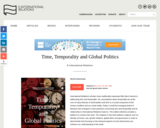
International Relations scholars have traditionally expressed little direct interest in addressing time and temporality. Yet, assumptions about temporality are at the core of many theories of world politics and time is a crucial component of the human condition and our social reality. Today, a small but emerging strand of literature has emerged to meet questions concerning time and temporality and its relationship to International Relations head on. This edited collection provides a platform to continue this work. The chapters in this book address subjects such as identity, terrorism, war, gender relations, global ethics and governance in order to demonstrate how focusing on the temporal aspects of such phenomena can enhance our understanding of the world.
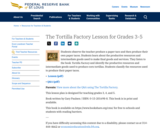
Students observe the teacher produce a paper taco and then produce their own paper tacos. Students learn about the productive resources and intermediate goods used to make final goods and services. They listen to the book Tortilla Factory and identify the productive resources and intermediate goods used to produce corn tortillas. Students classify the resources used to produce their paper tacos.
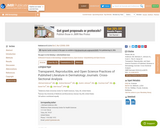
Background: Reproducible research is a foundational component for scientific advancements, yet little is known regarding the extent of reproducible research within the dermatology literature. Objective: This study aimed to determine the quality and transparency of the literature in dermatology journals by evaluating for the presence of 8 indicators of reproducible and transparent research practices. Methods: By implementing a cross-sectional study design, we conducted an advanced search of publications in dermatology journals from the National Library of Medicine catalog. Our search included articles published between January 1, 2014, and December 31, 2018. After generating a list of eligible dermatology publications, we then searched for full text PDF versions by using Open Access Button, Google Scholar, and PubMed. Publications were analyzed for 8 indicators of reproducibility and transparency—availability of materials, data, analysis scripts, protocol, preregistration, conflict of interest statement, funding statement, and open access—using a pilot-tested Google Form. Results: After exclusion, 127 studies with empirical data were included in our analysis. Certain indicators were more poorly reported than others. We found that most publications (113, 88.9%) did not provide unmodified, raw data used to make computations, 124 (97.6%) failed to make the complete protocol available, and 126 (99.2%) did not include step-by-step analysis scripts. Conclusions: Our sample of studies published in dermatology journals do not appear to include sufficient detail to be accurately and successfully reproduced in their entirety. Solutions to increase the quality, reproducibility, and transparency of dermatology research are warranted. More robust reporting of key methodological details, open data sharing, and stricter standards journals impose on authors regarding disclosure of study materials might help to better the climate of reproducible research in dermatology. [JMIR Dermatol 2019;2(1):e16078]
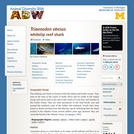
Triaenodon obesus: Information

Turbellaria: Information

Expand students’ understanding of U.S. History with culturally inclusive resources that bring the major people, events, and trends in history alive, while integrating often untold stories into the curriculum. Curated clips of trusted PBS programs and a diverse array of other media and interactive resources develop students’ historical thinking skills while broadening their appreciation of history’s multiple perspectives and complexity.
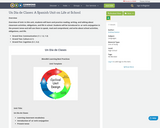
Overview of Unit: In this unit, students will learn and practice reading, writing, and talking about classroom activities, obligations, and life in school. Students will be introduced to -ar verb conjugation in the present tense and will use them to speak, read and comprehend, and write about school activities, obligations, and life. Strand One: Communication (1.1, 1.2, 1.3)Strand Two: Culture (2.1)Strand Five: Cognition (5.1, 5.2)
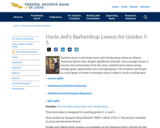
Students listen to the book Uncle Jed's Barbershop, about an African-American barber who, despite significant setbacks, saves enough money to buy his own barbershop. From the story, students learn about saving, savings goals, opportunity cost, and segregation. The students participate in a card game to further investigate what it takes to reach a savings goal.
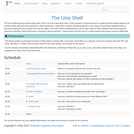
Software Carpentry lesson on how to use the shell to navigate the filesystem and write simple loops and scripts. The Unix shell has been around longer than most of its users have been alive. It has survived so long because it’s a power tool that allows people to do complex things with just a few keystrokes. More importantly, it helps them combine existing programs in new ways and automate repetitive tasks so they aren’t typing the same things over and over again. Use of the shell is fundamental to using a wide range of other powerful tools and computing resources (including “high-performance computing†supercomputers). These lessons will start you on a path towards using these resources effectively.
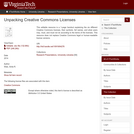
This editable resource is a 1-page handout explaining the six different Creative Commons licenses, their symbols, full names, and what users may, must, and must not do according to the terms of the licenses. This resource does not replace Creative Commons legal or human-readable license versions.
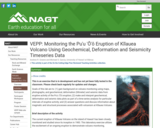
Show credits
HidePu'u 'O'o at the end of episode 32 (USGS photograph by J.D. Griggs, 4/22/85, JG5363).
This is an exercise that is in development and has not yet been fully tested in the classroom. Please check back regularly for updates and changes.
Goals of this lab are to: (1) gain background on volcano monitoring using maps, photographs, and geochemical, deformation (tiltmeter) and seismic data from eruptive activity of the Pu'u 'Ō'ō eruption; (2) make and interpret geochemical, deformation and seismic data plots as part of a time-series analysis for particular intervals of eruptive activity; and (3) answer questions and discuss information about magmatic and structural processes associated with volcanism at Kīlauea Volcano.
Brief description of the activity
The current eruption of Kīlauea Volcano on the island of Hawai'i has been closely monitored and studied since its inception in 1983. This laboratory exercise utilizes the excitement of an ongoing eruption to demonstrate volcano monitoring, deformation, and magmatic processes to better understand an active hotspot volcano.
(Note: this resource was added to OER Commons as part of a batch upload of over 2,200 records. If you notice an issue with the quality of the metadata, please let us know by using the 'report' button and we will flag it for consideration.)
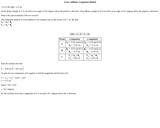
This web page is an interactive physics problem on vector addition. The page explains the concept of breaking a vector into components and adding them together, and works through an example problem. The attached Java applet visualizes the problem. This is part of a collection of similar simulation-based student activities.
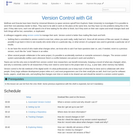
This lesson is part of the Software Carpentry workshops that teach how to use version control with Git. Wolfman and Dracula have been hired by Universal Missions (a space services spinoff from Euphoric State University) to investigate if it is possible to send their next planetary lander to Mars. They want to be able to work on the plans at the same time, but they have run into problems doing this in the past. If they take turns, each one will spend a lot of time waiting for the other to finish, but if they work on their own copies and email changes back and forth things will be lost, overwritten, or duplicated. A colleague suggests using version control to manage their work. Version control is better than mailing files back and forth: Nothing that is committed to version control is ever lost, unless you work really, really hard at it. Since all old versions of files are saved, it’s always possible to go back in time to see exactly who wrote what on a particular day, or what version of a program was used to generate a particular set of results. As we have this record of who made what changes when, we know who to ask if we have questions later on, and, if needed, revert to a previous version, much like the “undo†feature in an editor. When several people collaborate in the same project, it’s possible to accidentally overlook or overwrite someone’s changes. The version control system automatically notifies users whenever there’s a conflict between one person’s work and another’s. Teams are not the only ones to benefit from version control: lone researchers can benefit immensely. Keeping a record of what was changed, when, and why is extremely useful for all researchers if they ever need to come back to the project later on (e.g., a year later, when memory has faded). Version control is the lab notebook of the digital world: it’s what professionals use to keep track of what they’ve done and to collaborate with other people. Every large software development project relies on it, and most programmers use it for their small jobs as well. And it isn’t just for software: books, papers, small data sets, and anything that changes over time or needs to be shared can and should be stored in a version control system.
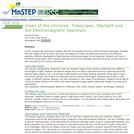
This is a computer lab activity where students view images of stars, nebulas, and galaxies and discover factors in telescope design that allow scientists to study the universe. The students will write questions about the images and produce a power point presentation on features of the universe.

Students learn the value of writing and art in science and engineering. They acquire vocabulary that is appropriate for explaining visual art and learn about visual design principles (contrast, alignment, repetition and proximity) and elements (lines, color, texture, shape, size, value and space) that are helpful when making visual aids. A PowerPoint(TM) presentation heightens students' awareness of the connection between art and engineering in order to improve the presentation of results, findings, concepts, information and prototype designs. Students also learn about the science and engineering research funding process that relies on effective proposal presentations, as well as some thermal conductivity / heat flow basics including the real-world example of a heat sink which prepares them for the associated activity in which they focus on creating diagrams to communicate their own collected experimental data.
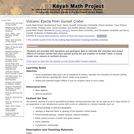
Students are provided with equations and geological data to estimate the velocities and impact effects of volcanic bombs that were ejected during the last eruption of Sunset Crater, a young cinder cone volcano in northern Arizona.
Click here to view the full activity on the KÃyah Math Project website.
(Note: this resource was added to OER Commons as part of a batch upload of over 2,200 records. If you notice an issue with the quality of the metadata, please let us know by using the 'report' button and we will flag it for consideration.)

Students select dinosaurian models (toys) from a selection of Carnegie, Natural History Museum (London) and other manufacturers (Schleich, Safari, etc). Each student identifies their dinosaur, places it on a cladogram (provided) and determines when it lived. They then measure the dinosaur in three dimensions (length, width, height), compare one or more of these dimensions to "real" dimensions provided (usually the model says what the length was). Dividing "real" by "measured" yields a scale.
Students then determine how much water their model displaces. NOTE: Most textbooks show this happening with a beaker. Beakers are no where near accurate enough to use, and many dinosaurs dont fit in them anyway. You need either extremely large graduated cylinders (unlikely) or else large containers in a sink. What works best is to have students fill a container to overflowing (in the sink, obviously), then gently dunk their dinosaur, causing the vessel to overflow, then retrieve their dinosaur. THEN you can use a graduated cylinder to refill the container and measure the amount of water displaced.
Once students have a scale and a volume, the can cube the former and multiply it by the latter to yield an estimate of the volume of the actual dinosaur. Multiplying this by a density estimate provides an estimated mass. I have them bracket it by taking 0.9kg/L and 1.05kg/L for "light" and "heavy." Feathered theropods are even lighter---I have them use 0.8 g/L for the light estimate. They then record their result (I am trying to generate a spreadsheet of these measurements over the years) and compare it to a published estimate. I should probably base their grade on the ratio of their estimate to the "actual" (if light, reversed if heavy) but generally just try to "police" the work---if they are way off, they need to go back and find what arithmetic error led to the problem.
In the introductory classes this is a simple 1-sheet worksheet (front and back). For the honors students, they take the assignment home and write it up.
PS. I let the anthropology majors play with models of Pleistocene megafauna instead.
(Note: this resource was added to OER Commons as part of a batch upload of over 2,200 records. If you notice an issue with the quality of the metadata, please let us know by using the 'report' button and we will flag it for consideration.)

An open text covering the foundations of computation and programming.